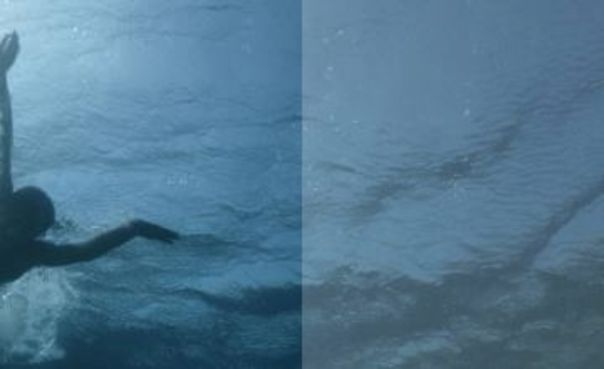Review: THE BLUE / U PLAVETNILO
By Arman Fatić

INTO THE BLUE / U PLAVETNILO (2017), the latest work of Antoneta Alamat Kusijanović, a Croatian director who started her film career 11 years ago at Talents Sarajevo, had the honor to be the first film in this year's Competition Programme - Short Film section at the Sarajevo Film Festival. The film had already won Special Jury Mention for Best Short Film in the Generation 14Plus section at Berlinale, Prize of the Youth Jury at the Oberhausen International Short Film Festival, and it was shortlisted by the American Film Academy for the 2017 Student Oscars just a few days ago.
Inspired by her childhood memories from the small Croatian island Kalamota (Koločep), Kusijanović juxtaposes adolescence with nature. INTO THE BLUE tells us a story of 13-year-old Julija who returns to this very island. In the opening scene the boat is getting to the coast of Kalamota, and we are listening to Julija's mother explaining that the two of them are trying to flee from an abusive household. As Julia gets annoyed by her mother's talk, she moves to the edge of the boat and dives into the sea.
The “dive-in” is a repetitive gesture in contemporary youth films from the country, thus can be seen also as an escapism moment and a signature move of the “Croatian everyday-life film movement” (“filmski val hrvatske svakodnevice”) that emerged several years ago. The movement is being characterized by stories that are relevant to the social and political situation in Croatia, mostly showing us the lives of women with emotional trauma, chased by their past, lost in present time, always portrayed a bit on the edge of reality. The “dive-in” motif, when protagonists are trying to get away from their problems by taking a leap into deep water, was best represented in films like Ivona Juka’s YOU CARRY ME / TI MENE NOSIŠ (2015), Hana Jušić’s QUIT STARING AT MY PLATE / NE GLEDAJ MI U PIJAT (2016), and the TV series directed by Dalibor Matanić THE PAPER / NOVINE (2016).
As we follow Julia's struggle to fit into her childhood setting, the tension rises, so we get to the climax and also the logical upshot of the “dive-in” trope: the drowning, albeit metaphorically depicted. Young director Antoneta Alamat Kusijanović succeeds in relaying the full spectre of this “everyday life movement” story in a short-film format and brings something important as a new insight for the whole movement.

